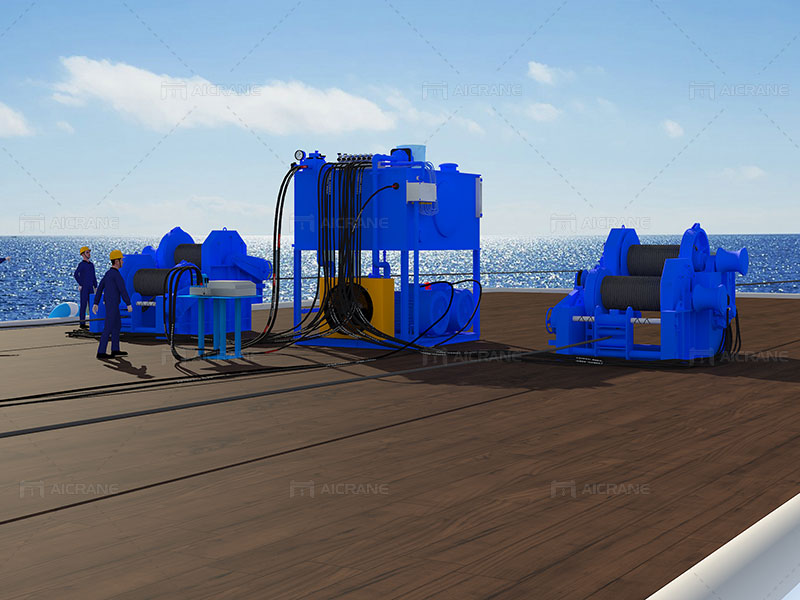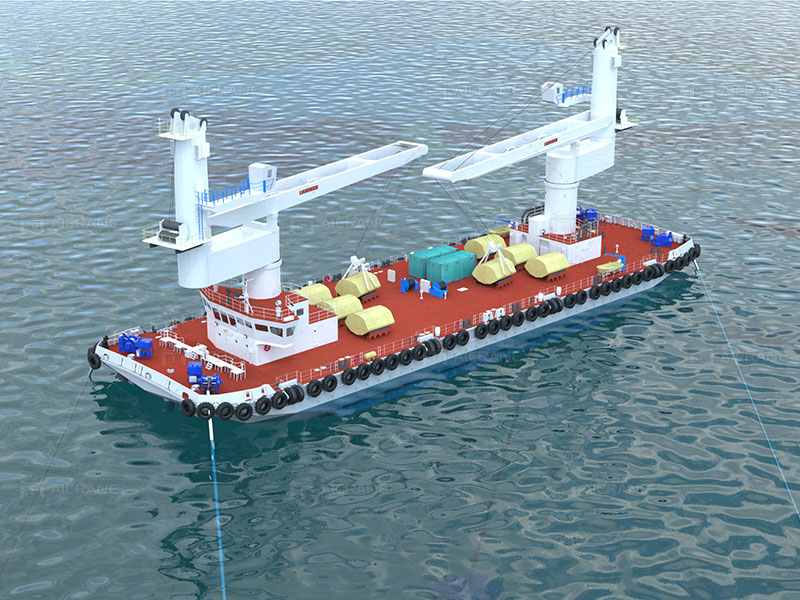In the realm of offshore industries, the installation and deployment of winches play a pivotal role in various operations, ranging from oil and gas exploration to offshore wind farms. These robust and versatile machines are essential for handling heavy loads, underwater equipment, and even personnel in some cases. This article delves into the intricate process of offshore winch installation and deployment, shedding light on the technology, challenges, and best practices that make it possible to harness the power of the open sea.

The Role of Offshore Winches
Offshore winches are workhorses of the ocean, designed to withstand the harshest conditions while efficiently performing tasks such as:
Anchor Handling: Offshore vessels and platforms rely on offshore winches to deploy and retrieve anchors, which are crucial for maintaining their position against tides and currents.
Towing and Mooring: Winches are used to tow other vessels, transport materials, and moor vessels securely, preventing them from drifting.
Subsea Operations: In subsea industries, winches are employed to deploy and retrieve remotely operated vehicles (ROVs), subsea structures, and pipelines.
Personnel Transfer: Some specialized winches are even used for transferring personnel to and from offshore installations, ensuring safe and efficient access.
Crane Operations: Offshore cranes often incorporate winches for lifting heavy equipment, containers, and materials.
Research and Data Collection: Scientific research vessels utilize winches to deploy instruments and gather data from the ocean’s depths.

Installation and Deployment Challenges
Installing and deploying offshore winches is no small feat. These machines operate in an environment that is as unforgiving as it is unpredictable. Here are some of the primary challenges faced during the process:
Harsh Weather Conditions: Offshore operations must contend with high winds, rough seas, and extreme temperatures, making installation and maintenance hazardous.
Deep Water Installations: Some offshore installations occur in water depths that require specialized equipment and engineering solutions.
Corrosion and Saltwater Exposure: Saltwater is highly corrosive, which means that winch components must be carefully selected and maintained to withstand the marine environment.
Safety Concerns: The safety of personnel working with and around offshore winches is paramount. Proper training, equipment, and protocols are essential to minimize risks.
Complex Engineering: The design and engineering of offshore winches must consider factors such as load capacity, wire rope selection, power source, and control systems.
Best Practices in Offshore Winch Installation and Deployment
To successfully navigate these challenges, offshore industries adhere to best practices for marine winch installation and deployment:
Site Assessment: A thorough site assessment is conducted to evaluate environmental conditions, water depths, and accessibility. This information guides equipment selection and engineering decisions.
Engineering Excellence: Winch systems are engineered for reliability, taking into account factors such as load capacity, safety margins, and redundancy to ensure seamless operations.
Corrosion Protection: Winches are equipped with specialized coatings, materials, and regular maintenance routines to protect against corrosion in the salty sea air.
Safety Protocols: Comprehensive safety protocols are established and followed rigorously to protect personnel and assets during winch installation, maintenance, and operation.
Training: Personnel receive specialized training to operate and maintain winch systems, including emergency procedures and troubleshooting.
Regular Inspection and Maintenance: Preventive maintenance schedules are established to inspect and maintain winches, ensuring they are always in peak working condition.
Environmental Considerations: Environmental impact assessments are conducted to minimize the ecological footprint of offshore operations, including winch deployments.
Case Studies: Offshore Winch Deployments
Let’s examine two real-world examples of offshore winch deployments:
Offshore Wind Farms: Offshore wind farms are becoming increasingly common for renewable energy generation. Winches are used to deploy and maintain massive wind turbine components, including foundations and tower segments. These deployments require precision to ensure the stability and longevity of the turbines.
Subsea Oil and Gas Operations: In deep-sea oil and gas exploration, winches are utilized to lower and retrieve equipment and sensors to the seafloor. These operations demand specialized deap sea deck winches capable of withstanding extreme pressures and depths, often exceeding 10,000 feet.
Conclusion
Offshore winch installation and deployment represent a complex and vital aspect of offshore industries. These robust machines, designed to conquer the challenges of the open sea, enable offshore operations to run efficiently and safely. By adhering to best practices, utilizing cutting-edge engineering, and prioritizing safety, industries ranging from energy to research can continue to harness the power and potential of the vast oceanic frontier. As technology advances and environmental considerations continue to grow, offshore winches will undoubtedly play an even more significant role in our quest to master the waves.